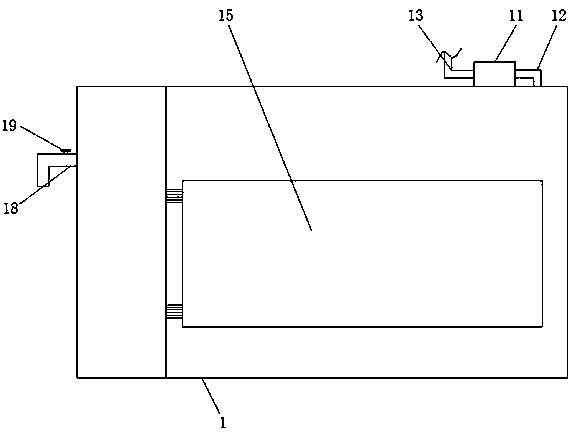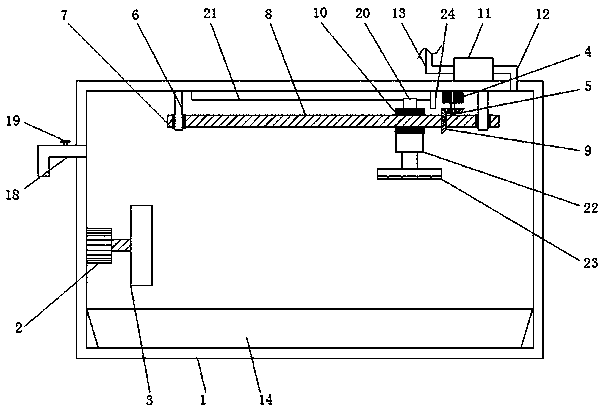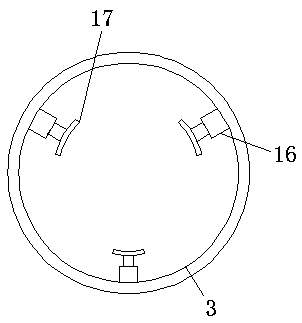Iron rod rust removing device for building decoration
An iron rod and construction technology, applied in the direction of grinding drive device, grinding/polishing safety device, grinding machine tool parts, etc., can solve the problems of iron filings pollution, low efficiency of iron rod rust removal, etc., and prevent secondary Oxidation, efficient and fast rust removal, simple structure
- Summary
- Abstract
- Description
- Claims
- Application Information
AI Technical Summary
Problems solved by technology
Method used
Image
Examples
Embodiment Construction
[0022] The following will clearly and completely describe the technical solutions in the embodiments of the present invention with reference to the accompanying drawings in the embodiments of the present invention. Obviously, the described embodiments are only some, not all, embodiments of the present invention. Based on the embodiments of the present invention, all other embodiments obtained by persons of ordinary skill in the art without making creative efforts belong to the protection scope of the present invention.
[0023] The embodiment of the present invention provides a kind of iron rod derusting device for building decoration, such as Figure 1-3 As shown, the vacuum frame 1 is included, and the bottom of the inner wall of the vacuum frame 1 is fixed with a chip storage box 14, and the chip storage box 14 is set to collect the scraped iron oxide chip layer in a closed space to prevent waste chip pollution environment, the front of the vacuum rack 1 is movably connecte...
PUM
 Login to View More
Login to View More Abstract
Description
Claims
Application Information
 Login to View More
Login to View More - R&D
- Intellectual Property
- Life Sciences
- Materials
- Tech Scout
- Unparalleled Data Quality
- Higher Quality Content
- 60% Fewer Hallucinations
Browse by: Latest US Patents, China's latest patents, Technical Efficacy Thesaurus, Application Domain, Technology Topic, Popular Technical Reports.
© 2025 PatSnap. All rights reserved.Legal|Privacy policy|Modern Slavery Act Transparency Statement|Sitemap|About US| Contact US: help@patsnap.com



